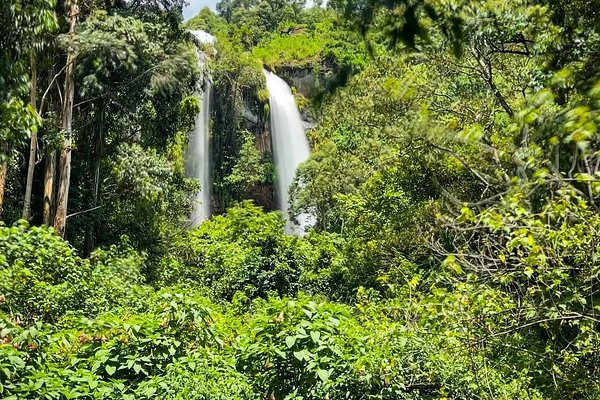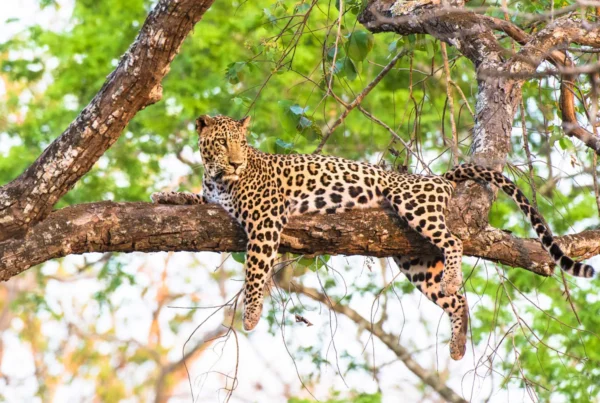How to Birding Safari in Bududa — 3-Day Itinerary on a Budget
Discovering Uganda’s Avian Paradise
Nestled in the eastern highlands of Uganda, Bududa is an emerging destination for bird enthusiasts who seek a unique blend of rich biodiversity, scenic landscapes, and authentic cultural experiences. Often overlooked in favor of the more frequented national parks, Bududa offers birders an intimate encounter with Uganda’s avian wonders at a pace that encourages observation, patience, and creativity. For those traveling on a budget, the region proves that exceptional birding experiences need not come with exorbitant costs. Its lush hills, terraced farmland, and forests are home to a variety of bird species, from vibrant sunbirds and hornbills to elusive raptors and warblers, providing ample opportunities for photography and field study.
Understanding Bududa’s Avian Appeal
Bududa’s appeal lies in its diverse habitats and favorable climate. The rolling hills, interspersed with montane forests, wetlands, and rivers, create a mosaic of ecological niches. This variety supports a wide range of bird species, both resident and migratory. The region’s altitude and rainfall patterns produce lush vegetation that attracts nectar feeders, insectivores, and seed-eaters alike, making it a haven for birders looking to capture the breadth of Uganda’s avian diversity.
The cultural landscapes in Bududa, including terraced farms and local villages, also provide unique birding opportunities. Farmers’ fields attract species such as weavers, starlings, and sunbirds, while the forests conceal shy warblers and babblers. Observing birds in these human-modified habitats adds depth to a birding safari, illustrating the complex relationships between humans and wildlife in Uganda’s highlands.
Planning Your Trip: When to Visit Bududa
The timing of a birding trip to Bududa is critical to maximizing both sightings and photographic opportunities. The dry seasons, from December to February and June to August, offer the most accessible trails and easier visibility of species congregating around water sources. These months are ideal for families or budget-conscious travelers, as travel costs and accommodation rates are generally lower, and transportation is more reliable on dry roads.
The rainy seasons, spanning March to May and September to November, bring verdant landscapes and an increase in insect activity, which in turn attracts insectivorous birds. While trails may be slippery and access to remote areas more challenging, the lush surroundings and abundance of breeding activity make these months exceptional for photography and observing young birds. For budget travelers willing to embrace the occasional shower, the rainy seasons provide a chance to witness birds in their most dynamic and colorful displays.
Day 1: Arrival and Initial Birding
The first day in Bududa typically begins with arrival in the district from nearby towns such as Mbale or Soroti. After settling into budget-friendly lodges or community guesthouses, the day is best spent acclimating to the local environment and exploring nearby accessible habitats. Early afternoon walks along forest edges and farmland paths often reveal common yet striking species such as the grey-headed sunbird, African paradise flycatcher, and various hornbills.
By late afternoon, birding excursions are most rewarding near water sources, where species such as kingfishers, bee-eaters, and herons can be observed feeding and interacting. The quiet hills and descending sun offer perfect conditions for photography, with soft, warm light that enhances plumage colors and landscape textures. The first day also provides an opportunity to familiarize oneself with local guides, who often possess intimate knowledge of nesting sites, feeding grounds, and secret forest corners that are otherwise difficult to locate.
Day 2: Full Immersion in Forest and Highlands
The second day is devoted to full-day exploration of Bududa’s forested hills and montane ecosystems. Guided walks in the early morning allow for the best observation of active species. The forest canopy is alive with chatter as warblers, babblers, and greenbuls move through the trees. Raptors, including African hawk-eagles and augur buzzards, patrol the skies above, offering dramatic photographic opportunities.
Afternoon excursions may shift to forest fringes and agricultural patches, where seed-eating species and weavers gather in colonies. Budget-conscious travelers can explore these areas on foot or using shared transportation, keeping costs manageable while still accessing prime birding locations. The combination of forest interior and open highlands ensures a variety of species are observed, while the presence of flowering plants and streams provides additional chances for capturing intimate details and behaviors through the lens.
Day 3: Community Engagement and Birding Wrap-Up
The final day of the itinerary balances birding with engagement in local culture. Villages surrounding Bududa offer insights into traditional agricultural practices, terraced farming, and sustainable land use, which are directly linked to the region’s bird diversity. Walking through these villages allows birders to observe species adapting to human-altered habitats, while also capturing compelling contextual images of humans and wildlife coexisting.
Morning excursions along riparian zones and small wetlands provide a last opportunity to encounter water-dependent species such as herons, jacanas, and African jacanas. Midday can be spent revisiting favorite sites from the previous days to photograph species that may have been missed or to refine compositions for those seeking artistic perfection. By late afternoon, the itinerary winds down with reflection, photography curation, and preparation for departure. The final images captured often tell a complete story of Bududa’s landscape, species richness, and the interaction of humans with the natural world.
Budget Considerations for Birders
Bududa is exceptionally accommodating for budget-conscious travelers. Lodging ranges from community-run guesthouses to small eco-lodges, offering both comfort and affordability. Meals can be sourced locally, providing fresh, traditional cuisine at low cost. Transportation within the district is efficient and inexpensive, with shared taxis and minibuses connecting birding hotspots.
Hiring a local guide is highly recommended, not only for safety and navigation but also for their knowledge of species locations and behaviors. For photographers, bringing lightweight equipment and versatile lenses can minimize costs while ensuring high-quality imagery. With careful planning, it is possible to enjoy a comprehensive three-day birding safari without exceeding modest budgets, while still gaining access to the most rewarding habitats in the district.
Tips for Successful Birding in Bududa
Patience and timing are essential. Early mornings and late afternoons are the most active periods for birds, while mid-morning and midday require quiet observation and movement along shaded paths. Binoculars and field guides are invaluable, as many species are small, fast-moving, or camouflaged against the dense vegetation. Photographers should take advantage of natural light, reflections in water, and contrasting backgrounds to create compelling compositions that highlight both the birds and their habitats.
Engaging with local communities respectfully enhances the experience, as their knowledge of nesting sites, seasonal migrations, and feeding patterns can lead to sightings that would otherwise be missed. Long-term observation during even a short three-day trip allows birders to record behavioral patterns, interactions, and variations between species that enrich understanding and provide unique photographic opportunities.
A Rewarding Experience for Budget Birders
Bududa offers a rare combination of biodiversity, scenic beauty, and cultural immersion that makes a three-day birding safari both rewarding and accessible for travelers on a budget. The district’s rolling hills, forests, wetlands, and agricultural landscapes provide a wealth of species and photographic opportunities, while the warmth of local communities enhances the authenticity of the experience.
For birders seeking a short yet immersive adventure, Bududa demonstrates that careful planning, early-season travel, and engagement with local guides can maximize both sightings and experiences without exceeding modest budgets. Every flight of a sunbird, rustle in the forest, and congregation of weavers along the highland edges tells a story that visitors can capture and carry home as lasting memories.
To ensure a seamless, guided, and enriching experience, it is recommended to book your Africa tours and safaris with WildHorn Africa, whose expertise ensures that each moment in Bududa—from dawn choruses to evening reflections—is captured, appreciated, and transformed into unforgettable encounters with Uganda’s avian wonders.





 WildHorn Africa – Authentic and unforgettable tours across Africa, guided by local experts who know the land, wildlife, and culture best.
WildHorn Africa – Authentic and unforgettable tours across Africa, guided by local experts who know the land, wildlife, and culture best.


